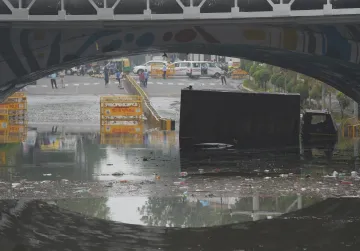The India Meteorological Department (IMD) on Monday clarified that the torrential rain on June 28 that brought Delhi to its knees was not a result of a cloudburst.
IMD chief Mrutyunjay Mohapatra held a press conference and said that the Safdarjung Observatory, the city's primary weather station, recorded rainfall of 91 mm between 5 am and 6 am on June 28.
Moreover, the Lodhi Road weather station recorded 64 mm rainfall from 5 am to 6 am and 89 mm rainfall from 6 am to 7 am. Mohapatra said, "These do not warrant to be declared as cloudbursts, but it was very close to a cloudburst"
Large-scale monsoonal weather systems created conditions for mesoscale convective activity
Notably, IMD had earlier explained the reason behind the sudden and extreme change in the weather. The Met Dept had said multiple large-scale monsoonal weather systems created conditions for mesoscale convective activity over Delhi NCR, resulting in intense thunderstorms and heavy rainfall during the early hours of June 28.
This mesoscale convective activity was supported by thermodynamic instability in the atmosphere, which is favourable for thunderstorms.
On June 28, the national capital's Safdarjung Observatory recorded a heavy rainfall of 228.1 mm in the 24 hours ending at 8.30 am on Friday. The rainfall on June 28 was the highest in June in the last 88 years — since 1936 and more than three times the June rainfall average of 74.1 mm. The IMD defines very heavy rain as rainfall amounting to between 124.5 and 244.4 mm in a day.
Northwest India sees warmest June in 123 years
Meanwhile, the IMD has said that Northwest India witnessed the warmest June since 1901 with a mean temperature of 31.73 degrees Celsius
The monthly average maximum temperature in the region settled at 38.02 degrees Celsius, which is 1.96 degrees Celsius above normal. While, the average minimum temperature stood at 25.44 degrees Celsius, 1.35 degrees Celsius above normal, according to IMD data.
Moreover, Northeast India recorded a 33 per cent rainfall deficit in June, which the IMD chief attributed to the sluggish advance of the monsoon over the northern and eastern parts of the country due to the lack of weather systems.
(With PTI Inputs)
ALSO READ | Delhi govt announces Rs 10 lakh compensation for families of those who died due to heavy rains
